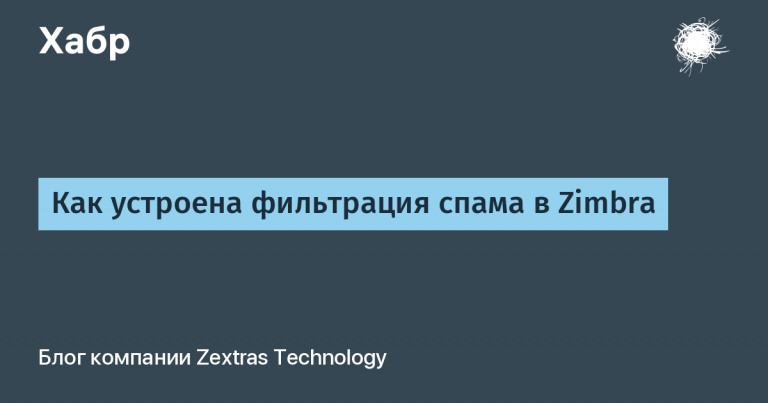How to establish a brand abroad and enter a foreign market
Bringing your product to a new market is a big decision. Whether you want to provide services abroad, sell products, or promote your own app/game/service, you need to take care of protecting your intellectual property.
Even if you have already registered a trademark for your product in Russia, this registration does not extend to foreign countries.
Forming a brand abroad and successfully promoting it on a foreign market is a complex and multifaceted process.
My name is Yuri Gorbachev. I am the head of the patent bureau “Lirate”. In this article I will tell you how to prepare a name or logo for use in another country, what registration options exist.
Overview of the main stages of trademark registration abroad
To bring a product or service under a logo or name to the market of another country, you need to go through several stages:
Conduct in-depth research on your target market. Determine the demand for your product or service, study your competitors, understand local culture, legislation and consumer preferences.
Adapt the designation based on the information collected during the research process. It is often necessary to adapt a name or logo to the requirements and preferences of a foreign audience so that it is perceived correctly.
Check the designation against the databases of patent offices and the legal requirements of the selected countries. It is necessary to make sure that there are no similar names or logos in the register, and to take into account the criteria by which experts will check the technical specifications.
Explore the options for registering a designation in different countriesYou need to calculate the expected costs, study the process and understand how complex it is, compare the options, and choose the best solution.
Register the designation in the required countries. To do this, an application is submitted to the patent office of the country, union or Rospatent, and state fees are paid.
We always recommend starting with the adaptation of the trademark, so that you can then go to registration with the confidence that you will not have to change the logo or name later. Let's look at the whole process in more detail.
Adapting the brand to local conditions
Before registering a trademark and starting to use it in another country, it is necessary to check whether it will be correctly perceived in the territory of the chosen state.
Let's remember a striking example from the past:
You've probably seen Gerber baby food with a cute baby on the shelves of a supermarket. The company thought this solution was universal, so they decided to use it everywhere. The batches of products were sent to Africa. Suddenly it became clear that the company was making losses. Later, experts explained that in these countries, the ingredients are usually shown on the packaging, since most of the target audience cannot read. It is very likely that the baby's image on the jars was perceived incorrectly, and people did not buy the product.

When studying a new market, it is necessary to take into account the fears, values, habits, motives and beliefs of the audience, lifestyle, level of development. Otherwise, such funny situations cannot be ruled out.
It is important to ensure that the words in a trademark are translated correctly to avoid double interpretation.
Example:
When Coca-Cola entered the Chinese market. A translation error caused many awkward situations. The inscription “Coca-cola” was translated as “a mare stuffed with wax.”

In some cases, brand names in another language may be offensive to the target audience.
Example:
Blédina baby food never caught on with Russian consumers. For obvious reasons, the name caused a negative reaction, and many simply found it funny.

The task of an entrepreneur when entering a foreign market is to preserve his identity, but adapt to the expectations of the foreign target audience. For research, you can use cultural analysis, consumer surveys, focus groups, studying local social networks, cooperation with local specialists, in-depth interviews.
Pay attention to the words, symbols, and colors used in your brand's visual representation.
Registering a Trademark in Another Country
Registering a trademark in another country is necessary so that foreign companies do not “take away” your designation from you.
Let's say you launch your own app in Italy, it will generate interest. A few months later, a local analogue may appear, which will have the same name and icon. The imitator will register these elements with the patent office of his country, make a claim against you and force you to leave the market. In accordance with local laws, you may be charged compensation, a fine or brought to criminal liability.
The second reason is the risk of violating the rights of foreign copyright holders.
Let's say you enter the market with your product without registering a trademark and conducting a preliminary check. A similar designation may already be in the register of a foreign state. The right holder notices illegal actions and sends you a lawsuit or claim. The case is resolved within the framework of the law in force in the state, which does not bode well for the violator.
Most often, our entrepreneurs try to register trademarks in the USA, China and Germany. These countries actively protect intellectual property, so it is not worth entering the market without registration.
For example, in China, “patent trolls” are thriving, registering all successful designations and then offering entrepreneurs to buy their own names and logos at an inflated price.

There are several options for registration in different countries. If you plan to work in several countries at once, you can register a trademark in all the countries of interest separately or choose the Madrid or “union” system.
National system
This option is suitable for those who want to receive protection in only one or two countries.
First stage. Before registering a trademark in the patent office of the selected state, it is necessary to conduct a check. It is necessary to identify whether there are similar designations in the register, whether the name and logo comply with the law of the country. For example, when registering in the USA, you can use their search engine.
Second phase. In other countries, the national system allows the procedure to be completed only with the participation of local specialists. The applicant will have to choose a representative who will help conduct business in the patent office of the chosen state.
Third stage. In all countries, a fee is paid for registration. Its amount may vary in each country. There are currently difficulties with payment in some countries due to political reasons, but an experienced registration specialist will definitely offer you a working scheme that has already been tested.
The fourth stage. Since the application is prepared by a local patent attorney, all you have to do is wait for it to be ready and sent to the patent office. Two checks are usually carried out: documents and a trademark. The application is handled by a specialist: if the experts send a notice, the specialist must respond.
The registration period can be up to 1.5 years. The costs consist of the amount of the state fee of a specific country and payment for the services of foreign patent attorneys.
Madrid system
When a trademark needs to be registered in two or more countries, it is faster and easier to do so under the Madrid system. You can obtain protection in 131 countries at once. The list of countries can be viewed on the WIPO website.
First stage. When registering under the Madrid system, it is advisable to check the designation in the registers of all countries in which registration is planned. The following services will help with this: WIPO, Global Brands DatabaseThe requirements of the legislation of the selected states and political peculiarities are also taken into account.
Example:
In China, the TSAR trademark was refused registration, which was successfully registered in Russia, the USA and other countries. It is not difficult to guess that the reason “may have an unhealthy (harmful) effect” means inconsistency with the ideology of the Communist Party of China.

Second phase. If you are not yet registered with the Russian Patent Office, you need to do so. To do this, submit an application to Rospatent, pay the fees and wait for the decision. It should be positive, then you will be able to proceed to the next step.
Third stage. Submit an application for trademark registration under the Madrid system to Rospatent. You must attach a cover letter with a request to register the designation under the Madrid procedure, confirmation of payment of state fees, and, if submitted through a representative, a power of attorney. The expert will study the documents and forward them to WIPO, from where they will go to the national patent offices of the countries specified in the application.
Registration takes on average a little over 1 year. Costs consist of the state fee of the countries specified in the application, the Madrid system fee (can be calculated using calculator) and Rospatent (4,900 rubles). The current amount of national fees can be found on the websites of patent offices.
Trademark registration under the Madrid system is valid for 20 years, then it can be extended. To do this, a fee is paid, the receipt is submitted to Rospatent. In the future, if necessary, it is possible to territorially expand protection to other countries.
For 5 years, international registration will depend on national registration. If the latter is cancelled, protection in all foreign countries will cease immediately.
Union system
This option allows you to register in several countries at once and save money, but differs in that the countries of interest must be members of the same union: WIPO, African IP Organization, European Patent Office, African Regional IP Organization, Eurasian Patent Office, Benelux, BRICS.
First stage. The designation must be checked against the requirements of all countries that are part of the union and the general requirements of the association must be taken into account. It is important to eliminate all risks before submitting an application.
Second phase. Prepare an application to the union and pay the registration fee.
Third stage. Submit your application to the Union Patent Office. They will examine your documents and forward them to the countries indicated. The national offices will decide whether to register or refuse.
The documents must be completed in one of the languages accepted in the union. The registration period can be up to 1 year. The costs include the fee established by the chosen union. This option is especially relevant for those entrepreneurs who need to protect a trademark in the CIS (Eurasian Union) and Europe (European Union) countries.
When registering under the Madrid or Union system, you can seek help from Russian patent attorneys. There is no need to look for foreign specialists.
Key points for successful entry into a foreign market
A trademark cannot be registered in every country. All countries have their own standards that a designation must meet. When planning to file an application, you need to take these features into account. For example, in the USA, proof is required that the designation is already used in commercial activities, and in the UAE, trademarks with images of women and pigs are prohibited.
Don't make a decision without considering all the options. Decide which countries you need security in, determine which registration options are available to you, calculate the costs, and choose the best solution.
Paying duties may be problematic at the moment. However, there are options for how to resolve this issue in each specific case. It is necessary to consult with practicing experts.
Choose the least expensive and fastest way to register a trademark. To do this, you need to determine which countries you are interested in, which unions and associations they are a part of, and whether it is possible to go through the procedure under the Madrid system.

Forming a brand abroad and entering a foreign market is a complex but entirely feasible process. The main thing is to carefully consider each step, adapt your designation to the local market and study the specifics of the legislation of the selected countries.
Good luck in international business!





